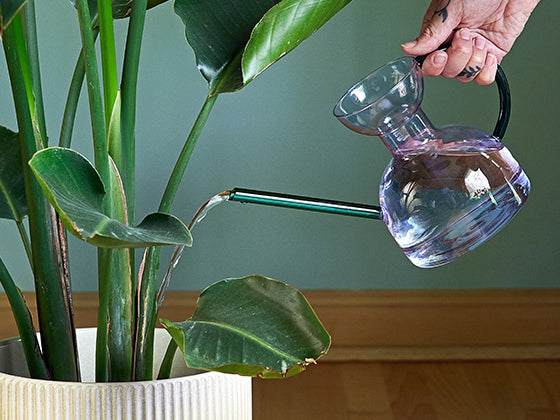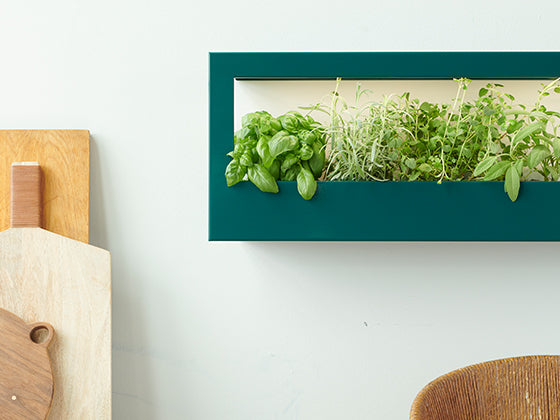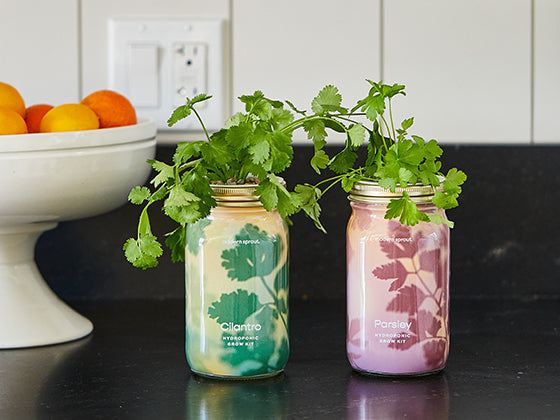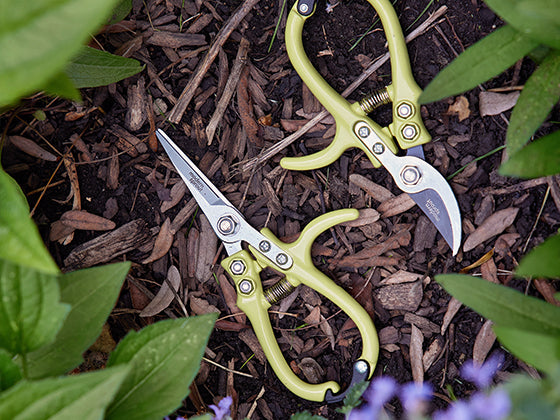Ideal planter lights: where do I start?
Consider your plant goals. Are you supplementing natural light or completely replacing it? Will you be using a grow light 24/7, or just seasonally? How important are aesthetics to you?
Speaking to the science of grow lights, the industry is most concerned with their efficacy, or the uniform distribution of light and its practical application in simulating the sunlight your plants need rather than coexisting with existing décor. We’re concerned about how much energy lights are capable of passing to your plants, and the strengths of that energy without sacrificing function for style.
 On a technical front, some lights are focused in a direct beam, some are arranged in more of a diffused bar, and others are adjustable to best marry the two light disbursement options. In addition to disbursement, we want to know where the bulb falls in regards to the ideal PAR measurement (Photosynthetically Active Radiation) for grow lights is measured between 400-700 nanometers with benefits found on either end of the spectrum.*
On a technical front, some lights are focused in a direct beam, some are arranged in more of a diffused bar, and others are adjustable to best marry the two light disbursement options. In addition to disbursement, we want to know where the bulb falls in regards to the ideal PAR measurement (Photosynthetically Active Radiation) for grow lights is measured between 400-700 nanometers with benefits found on either end of the spectrum.*
*Keep in mind, that PAR is the calculated overall potential of the light in all directions, not as a beam of light.
Types of light and how they benefit plants:

SUNLIGHT
This includes sunlight in all of its naturally occurring forms
- Output measured in Joules
- Impact on plants: When positioned with the right amount of sunlight, this is the ideal light for growing plants the natural way
- Other benefits: No need for regulation, provides warmth, the moist nutrient-rich supplier of light-based energy

INCANDESCENT & LED LIGHTBULBS
- Emit a green/yellow/orange light
- Output measured in Lumens
- Impact on plants: Absolutely no benefits
- Other benefits: While incandescent and LED lights can light your home, office space, and beyond, these lights do nothing for the health and wellbeing of your plants
 COMMERCIAL GROW LIGHTS
COMMERCIAL GROW LIGHTS
- This includes bulky, long bar lights, overhanging plates of lights, and other more industrial sunlight supplements
- Output measured in Microjoules
- Impact on plants: Grow tons of plants over a limited area, often in otherwise un-growable locations. This is one of the reasons that when most people think about grow lights, they envision a hard red or blue tinge. Red best encouraging fruiting and flowering, while a more bluish light better aids root production.
- Other benefits: Some lights have on/off timers, you can grow a great deal with only a few fixtures, though you'll likely want these industrial behemoths tucked away in a basement or garage due to their look and size.

FULL-SPECTRUM GROW LIGHTS
These are measured in a comparably much smaller unit of measurement (micromole per joule) when compared to the strength of the sun. These lights isolate red/blue light in their design.
- Covers all of Modern Sprout's current line of grow lights
- Output measured in Microjoules
- Impact on plants: By offering full-spectrum coverage with a neutral light that mimics sunlight to the naked eye, our full-spectrum lights give plants exactly what they need to grow. No more do great grow lights need a gaudy glow to guarantee results.
- Other benefits:
- App regulation - never a cloudy day with Modern Sprout
- Fashion-forward design with proven results
- Ability to dim light accordingly to a schedule to better mimic the sun
Words by Sydney Gutierrez







